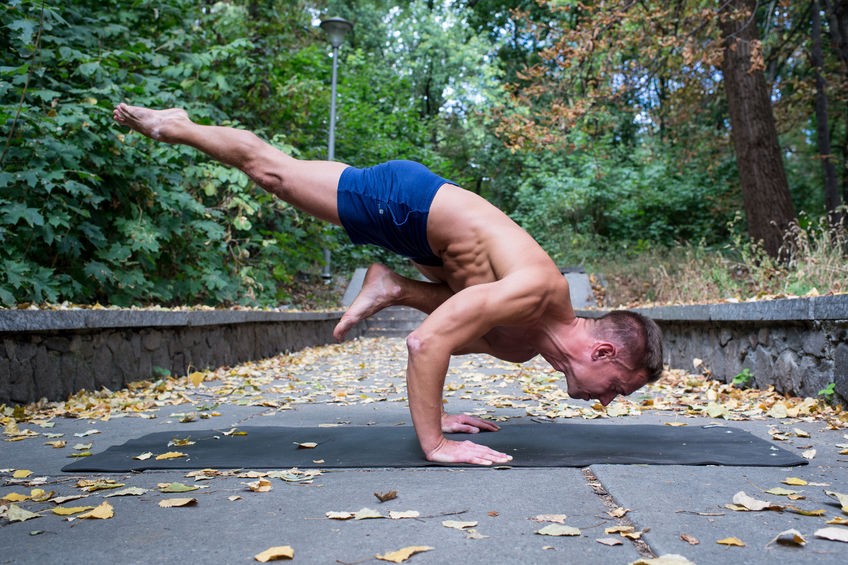 Over the last decade, CrossFit has gone from “obscure training program” to “that thing your buddy won’t stop raving about.” The premise seems reasonable enough. A training system that’ll make you stronger and help you lose weight? Sounds like the best of both worlds to me.
Over the last decade, CrossFit has gone from “obscure training program” to “that thing your buddy won’t stop raving about.” The premise seems reasonable enough. A training system that’ll make you stronger and help you lose weight? Sounds like the best of both worlds to me.
Sadly, CrossFit’s potential benefits don’t outweigh its risks. Forget about the fact that more than 70% of people that train using CrossFit will sustain some kind of injury (predominantly shoulder and spine injuries, according to the study linked above). This is bigger than bashing CrossFit and their use of high-rep Olympic lifts.
Frankly, there are better ways that the average person can get in shape. These training methods don’t encourage poor form, won’t cause excessive wear-and-tear on your joints and just might keep you out of the emergency room.
Alternative 1: Yoga
I know what you’re thinking: I thought we were talking about training programs. Well, before you go ahead and dismiss yoga, take a second to think and think about what strength training really is. According to Mosby’s Medical Dictionary:
“Strength training sessions are designed to impose increasingly greater resistance, which in turn stimulates development of muscle strength to meet the added demand.”
It may not be the first thing you associate with yoga, but rest assured that yoga definitely develops your muscular strength. In fact, an argument could be made that yoga is better than traditional strength training (with free weights) because it promotes one crucial thing that most training programs tend to ignore: balance.
While isolated exercises focus on developing larger muscle groups, yoga encourages the development of all your muscles. So yes, your quads will get worked. But so will those stabilizer muscles that keep you from getting injured. By conditioning your body to handle movements in multiple directions, you’re developing the kind of overall strength that can prevent injuries.
Now, it’s worth pointing out that if you just want to build muscle, lifting weights will give you faster results. That being said, the average person would probably benefit more from a training program that focuses on functional strength than having bigger biceps.
Alternative 2: Bodybuilding
Bodybuilding has had something of an image problem during the last few decades. While it was once seen as a way of pushing yourself to your absolute limit, bodybuilding has slowly become a shell of its former self. With the prominent use of performance-enhancing drugs, bodybuilding has terrified plenty of ordinary people into forsaking the “freak show” of training programs completely.
Let’s get one thing straight: you will never be that big. You could train religiously for the rest of your life, but unless you have the right genetics AND the desire to actually use performance enhancers, you wouldn’t even get close to the Mr. Olympia physique.
Here’s what bodybuilding can actually do for you:
- Develops your larger muscle groups (Chest, Quads, Shoulders)
- Losing weight
- Actually looking good during beach season
That’s basically it. Bodybuilding helps you develop a physique, while encouraging proper form. Oh yeah, that’s right. Proper form isn’t just encouraged in bodybuilding, it’s a requirement. Properly moving through the full range of motion with controlled reps? That’s bodybuilding in a nutshell. Anything else is just a cheap imitation that doesn’t deserve to call itself bodybuilding.
Alternative 3: Powerlifting
This one may come as a surprise to some of you. After all, this entire article has been dedicated to the idea that proper form and control lead to better results. Honestly, it’s a shame that more people don’t understand what goes into powerlifting.
Sure, you may have seen a powerlifting competition on TV and thought that it’s just a bunch of strong men carrying things, but it’s much more than that. Face it: people with poor form get injured. So, if you’re looking at a powerlifter who competes (and wins), chances are they aren’t getting injured too often. Moral of the story? If you lift weights with proper form, you’ll develop the strength without risking injury.
If that wasn’t enough, there’s even evidence to show that powerlifting movements actually develop the most strength out of all of these alternatives (according to this article by T-Nation).
So, if you’re looking for a way to build that strength, don’t be afraid to give powerlifting a shot. In fact, that goes for all of these alternatives. There’s no shame in trying one of them out and seeing how your body responds to it. Who knows? You may even like it.

























